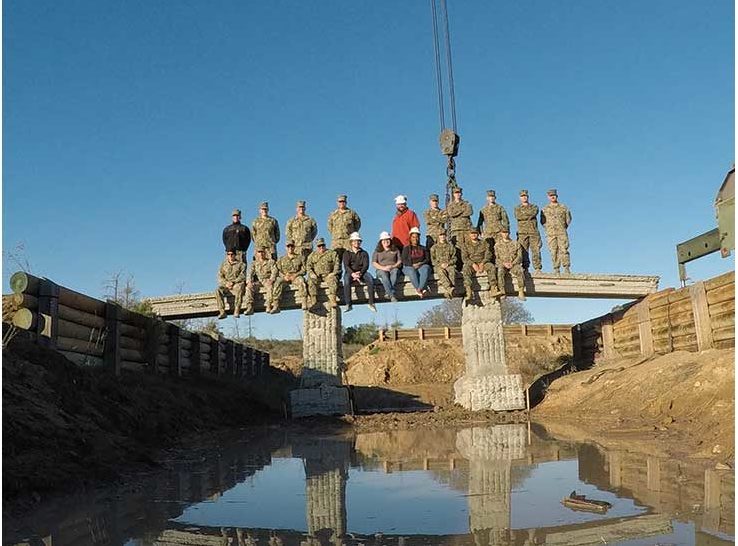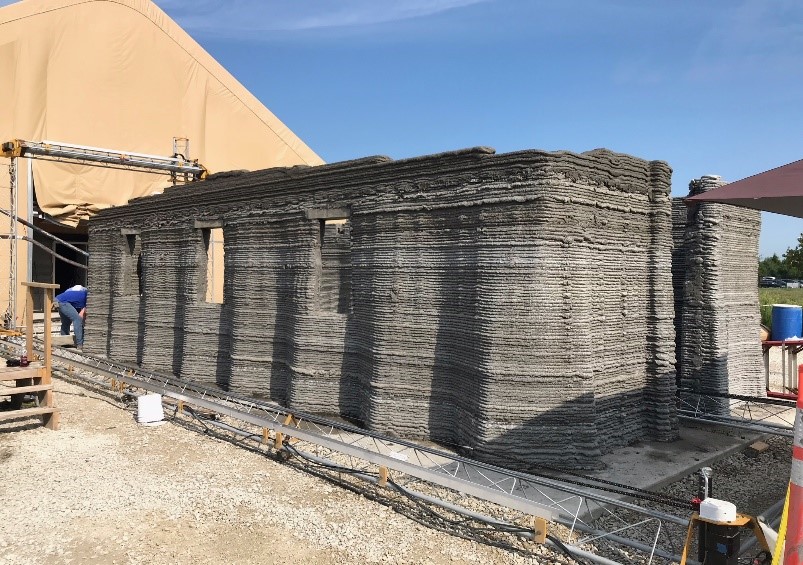Megan Kreiger, a lead mechanical engineer, at the U.S. Army Engineer Research and Development Center (ERDC), and her team of engineers, have 3D printed a 32-ft-long reinforced concrete footbridge at the Marine Corps Base Camp Pendleton in Southern California.
“My goal is to establish additive construction as a viable method and introduce the benefits of large-scale 3D printing to military and commercial construction,” added Kreiger.
“I want to push forward and test the limits of the construction industry through 3D printing.”

Camp Pendleton’s 3D printed concrete bridge
In 2016, Captain Matt Friedell, the Additive Manufacturing Lead for the Marine Corps Systems Command (MCSC), met Kreiger and recognised her interest in the field of construction-scale 3D printing.
“She spoke in grand terms of where the technology will take humanity in the future [and] took that vision and used it as the kindling to ignite others’ imaginations,” added Captain Friedell.
The two collaborated within the MCSC’s team to 3D print a concrete barrack in 40 hours. The 500-square-foot barrack was built at the ERDC in Champaign, Illinois. The barrack was reinforced with steel and analysed for structural performance by architecture and urban planning firm SOM.
The team has emphasised advantages of 3D printed concrete structures, i.e., the limited labour needed, as well as the portability of the machinery used.
Captain Friedell, previously stated, “In active or simulated combat environments, we don’t want Marines out there swinging hammers and holding plywood up.”
“Having a concrete printer that can make buildings on demand is a huge advantage for Marines operating down range.”
Kreiger also added, “It would be phenomenal if we could make a bridge that could support a tank.”

The U.S. Army’s first 3D printed barracks
In 2017, the Construction Engineering Research Laboratory (CERL) in Champaign, Illinois, revealed the successful construction of its first 3D printed barracks hut. The 512 square-feet semi-permanent structure was made using a 3D printer made from a sliding metal gantry.
Alternative cement printing techniques have been demonstrated using robotic arms from the Nanyang Technological University and ETH Zurich. According to Dr. Michael Case, CERL’s Automated Construction of Expeditionary Structures (ACES) program manager, the ACES technology “is a real game changer” in the field.
“Unlike previous efforts, ACES can use up to 3/8 inch aggregate in the concrete that is used. In addition, the ACES project paid particular attention to methods of reinforcing printed concrete, both horizontally and vertically.”
Submit your nominations now for the 3D Printing Industry Awards 2019.
Stay up to date with the latest 3D printing advances in the military by signing up to our free newsletter. Also find us on Facebook and Twitter.
Furthermore, the 3D Printing Industry Jobs is live. Post a job or discover your next career move now.
Featured image shows Kreiger (seated, sixth from left) and her team on the 3D printed reinforced concrete footbridge. Photo via the ERDC.


